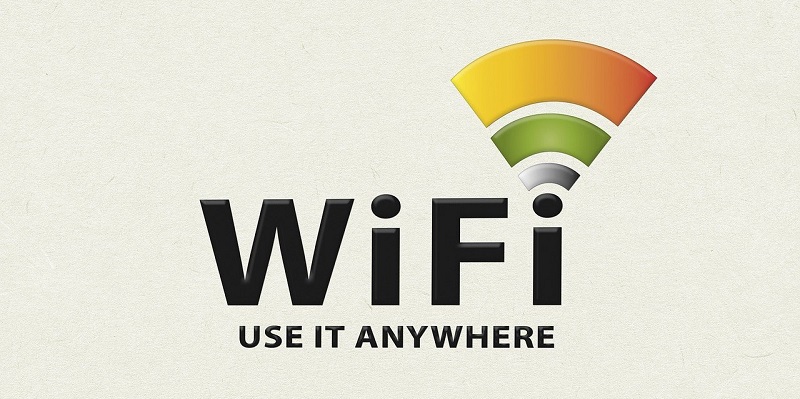In today’s digital age, data plays a crucial role in shaping business strategies and operations. Wi-Fi analytics, a powerful tool, is revolutionizing the way businesses operate and make decisions. By providing valuable insights into customer behavior and preferences, Wi-Fi analytics enables businesses to optimize their operations, enhance customer experiences, and drive revenue growth.
Adoption of Wi-Fi Analytics across Industries
Wi-Fi analytics is making its mark across various industries, empowering businesses to gain a competitive edge. Retailers, hospitals, and other sectors are increasingly leveraging Wi-Fi analytics to gather actionable insights and make informed decisions. By understanding customer behavior and preferences, businesses can tailor their offerings and marketing strategies accordingly, resulting in improved customer satisfaction and increased profitability.
Wi-Fi Analytics in Retail
In the retail industry, Wi-Fi analytics is a game-changer. By tracking customer footfall, dwell time, and in-store behavior, retailers can gain a comprehensive understanding of their customers. This knowledge empowers retailers to optimize store layouts, product placements, and store operations. By personalizing the customer experience and delivering targeted offers, retailers can boost sales and customer loyalty.
Wi-Fi Analytics in Hospitals
Wi-Fi analytics is also transforming the healthcare industry. Hospitals are utilizing Wi-Fi analytics to monitor patient flow and optimize resource allocation. By analyzing data on waiting times, occupancy rates, and patient movement, hospitals can streamline operations, reduce wait times, and enhance patient care. This optimization of resources ultimately improves the overall efficiency of healthcare facilities.
Integration of Wi-Fi Analytics with AI and ML
The integration of Wi-Fi analytics with advanced technologies like Artificial Intelligence (AI) and Machine Learning (ML) takes its capabilities to the next level. These technologies enable businesses to analyze vast amounts of data in real-time, derive actionable insights, and make data-driven decisions. By automating and enhancing the analysis processes, businesses can effectively utilize the insights from Wi-Fi analytics to drive growth and innovation.
AI-Powered Wi-Fi Analytics and Customer Behavior Prediction
One of the key advantages of AI-powered Wi-Fi analytics is its ability to predict customer behavior patterns. By analyzing historical data and identifying trends, businesses can anticipate customer needs and preferences. This enables them to deliver personalized experiences, optimize marketing campaigns, and even develop new products or services tailored to individual customer preferences. Such predictive capabilities can significantly enhance customer satisfaction and increase customer loyalty.
ML Algorithms for Anomaly Detection in Network Performance
Wi-Fi analytics integrated with ML algorithms bring another level of efficiency to network management and performance optimization. These algorithms can identify anomalies in network performance, such as sudden drops in speed or connectivity issues. By proactively addressing these issues, businesses can ensure seamless connectivity for their customers and avoid any potential disruptions.
Wi-Fi Analytics in Smart Cities
Wi-Fi analytics is playing a crucial role in the development of smart cities. With the rise of connected devices and the Internet of Things (IoT), city authorities can use Wi-Fi analytics to monitor traffic patterns, manage public services, and enhance urban planning. By analyzing data on transportation, energy consumption, and citizen behavior, city planners can make informed decisions to improve city infrastructure, reduce congestion, and enhance the overall quality of life for residents.
Addressing Data Privacy and Security Concerns with Wi-Fi Analytics
While Wi-Fi analytics offers tremendous benefits, concerns about data privacy and security have also arisen. To address these concerns, privacy-preserving Wi-Fi analytics solutions have emerged. These solutions anonymize user data and provide aggregated insights, ensuring that individual privacy is protected while still allowing businesses to gain valuable insights. Privacy-conscious practices are essential in building trust and maintaining the integrity of Wi-Fi analytics initiatives.
Wi-Fi Analytics Trends and Challenges
In the fast-paced world of technology and data analytics, businesses must stay ahead of the curve. To fully unlock the potential of Wi-Fi analytics and gain a competitive edge, businesses must navigate trends and challenges. This includes effectively integrating AI and ML into Wi-Fi analytics, leveraging the growth of smart cities for data insights, and ensuring robust data privacy and security measures.
Wi-Fi analytics is transforming the way businesses operate and strategize. By uncovering valuable insights into customer behavior, optimizing operations, and enhancing revenue growth opportunities, Wi-Fi analytics has become an indispensable tool for businesses across various industries. By embracing the trends, overcoming challenges, and prioritizing data privacy, businesses can fully unlock the power of Wi-Fi analytics and gain a competitive edge in the ever-evolving marketplace.

